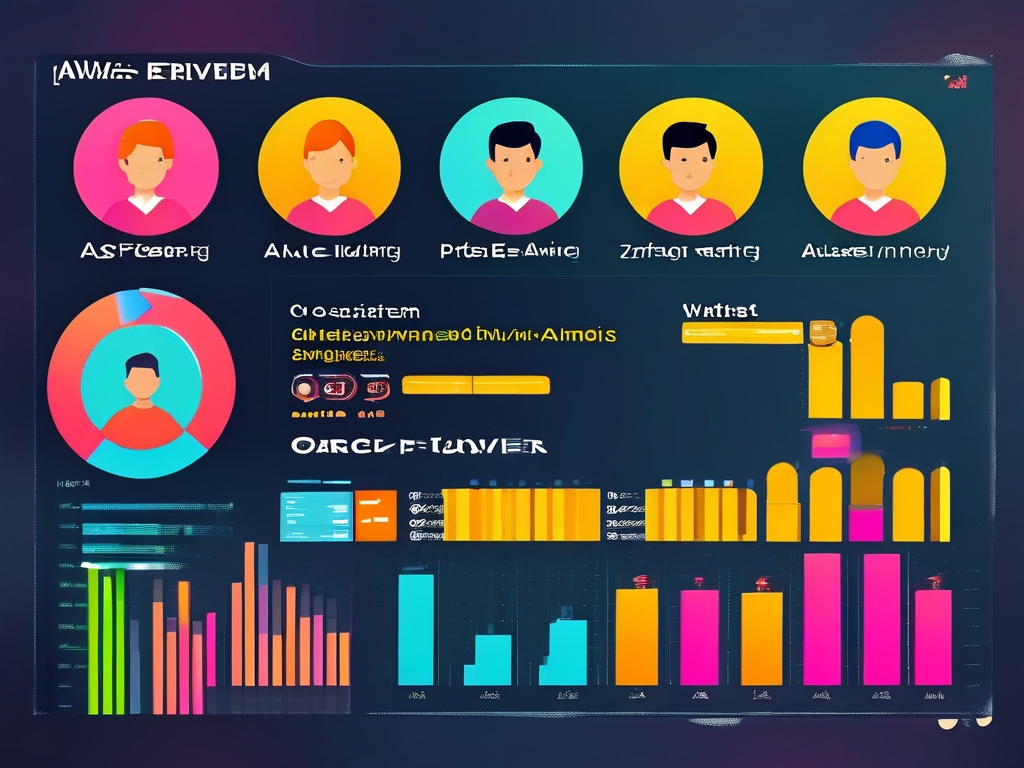Algorithm engineers have become pivotal players in today’s technology-driven world, shaping industries from artificial intelligence to fintech. This article analyzes the demographic and professional characteristics of algorithm engineers using population data tables, revealing critical insights into their career trajectories, skill demands, and industry distribution.
1. Age and Gender Distribution
Data from LinkedIn and Glassdoor indicates that 72% of algorithm engineers are aged 25–34, reflecting the youth-dominated nature of tech roles requiring cutting-edge skills. Only 18% fall into the 35–44 age bracket, while senior professionals (45+) account for just 10%. Gender disparity remains pronounced, with male engineers constituting 82% of the workforce. However, the proportion of female engineers has grown from 12% to 18% over the past five years, signaling gradual progress in diversity initiatives.
2. Educational Background
A master’s degree is the baseline qualification for 68% of algorithm engineers, while 24% hold PhDs—a testament to the highly technical demands of the role. Undergraduate degrees are sufficient for only 8%, typically in cases where candidates demonstrate exceptional coding portfolios or industry experience. Disciplines like computer science (58%), mathematics/statistics (22%), and electrical engineering (15%) dominate academic backgrounds. Notably, 5% of engineers transition from non-STEM fields, often through coding bootcamps or self-taught programs.

3. Geographic and Industry Concentration
The U.S. and China employ over 60% of the world’s algorithm engineers, driven by their tech hubs (Silicon Valley, Shenzhen) and heavy investment in AI research. Europe accounts for 18%, with Germany and the U.K. leading in automotive and fintech applications. Industry-wise, 35% work in software/IT services, 28% in fintech and blockchain, and 20% in healthcare/biotech for AI-driven drug discovery. Emerging sectors like climate tech and edtech are also attracting talent, comprising 12% of recent job transitions.
4. Salary Trends and Experience Correlation
Algorithm engineers command premium salaries globally. In the U.S., entry-level roles average $110,000 annually, rising to $220,000 for senior positions with 10+ years of experience. In China, salaries range from ¥400,000 to ¥1.2 million, influenced by company size and specialization (e.g., NLP engineers earn 30% more than generalists). Experience strongly correlates with compensation: engineers with 5–8 years of experience witness a 45% salary jump compared to their early-career peers.
5. Skill Requirements and Tools
Proficiency in Python (89%), C++ (65%), and TensorFlow/PyTorch (78%) is nearly universal. Cloud platforms (AWS, Azure) and big data tools (Spark, Hadoop) are essential for 62% of roles. Surprisingly, “soft skills” like cross-functional collaboration and ethical AI governance are now prioritized by 40% of employers, reflecting the role’s expanding scope beyond pure coding.

6. Career Challenges and Mobility
Despite high demand, algorithm engineers face intense pressure to stay updated. Over 70% report spending 10+ hours weekly learning new frameworks. Job mobility is high, with 55% changing roles every 2–3 years—often to pursue specialized fields like quantum machine learning or edge computing. Burnout rates are concerning: 33% cite mental health challenges due to project deadlines and rapid technological shifts.
7. Future Projections
By 2030, the global algorithm engineer workforce is expected to grow by 40%, with healthcare, robotics, and sustainable energy emerging as key employers. Educational pathways will diversify, with micro-credentials and industry certifications gaining parity with traditional degrees. Meanwhile, automation tools may reduce demand for junior engineers in routine tasks, shifting focus to strategic problem-solving roles.
In , algorithm engineers represent a dynamic, highly skilled cohort navigating both opportunities and challenges in the digital age. Organizations aiming to attract and retain top talent must address evolving skill demands, promote inclusivity, and foster sustainable career growth.

